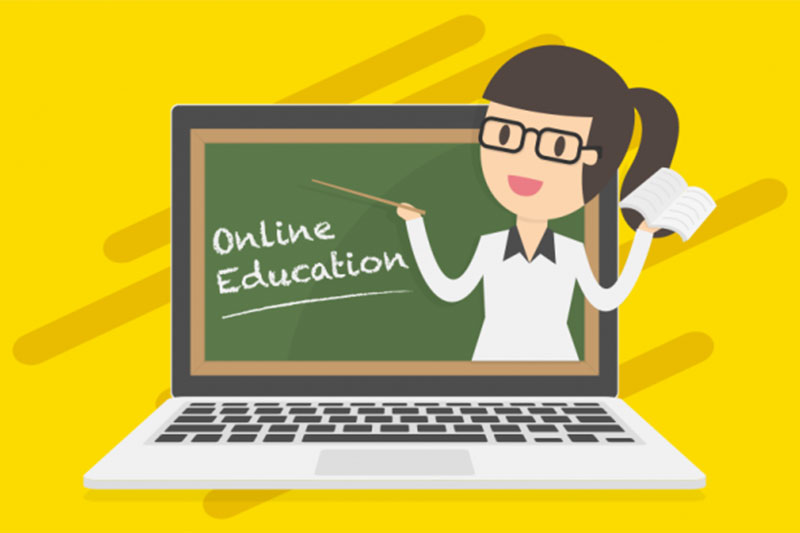Learn how to transform your face-to-face classes into online classes
With the growth of the eLearning market, countless people saw the opportunity to start a new business by transforming knowledge into online classes.
The rise of distance learning has not gone unnoticed by classroom teachers and, especially now, with the crisis of the new coronavirus, having the content of classes in digital format has become fundamental.

Tips for creating online classes from traditional classes
Many professionals believe that passing the material used in the classroom, such as handouts, PowerPoint presentations, questionnaires, assessments, among others, to the digital format, is enough to create online classes.
The truth is that it’s necessary to be more careful about the instructional design and the treatment of the content to ensure the quality and effectiveness of the material.
Making this migration requires good planning and adaptations to obtain the best result.
Check out some tips to convert your classroom classes into distance learning courses successfully.
– 7 tips for setting up a Successful Online Class
Define the format of the online course
There are three formats of distance learning courses to which you can convert your face-to-face class:
- Asynchronous Learning: the student interacts directly with the content, and the interaction with the instructor occurs with delay, through emails, forums, feedback, etc. The advantage of the asynchronous format is that it allows the student greater flexibility in terms of time, place, and pace of learning.
- Synchronous Learning: the class takes place in real time, transmitted online through audio, video conference, chat, among others. This model brings together instructors and students in the same time interval and allows everyone to communicate with each other. The advantage of this model is to break the student’s isolation, allowing him to solve his doubts on the spot, participate and share knowledge.
- Hybrid Learning: combines characteristics of asynchronous and synchronous learning. A very complete form of teaching, it allows the student to establish his own learning pace, studying the content alone, but he also has moments of interaction in real time with the instructor and colleagues.
– Blended learning: how your school can combine online and face-to-face teaching
All three formats have their characteristics and advantages and you must decide which is the best for your business model.
When in doubt, think about which model best meets the needs of your target audience.
With this question defined, it will be possible to have a clearer idea of the adaptations that must be made in your material to transform it into online classes.
Apply principles of Instructional Design
No matter how successful your content is in the classroom and how good it looks the way it is, it will still need to undergo a redesign with a focus on instructional design.
The visual part of your online course is very important to attract and delight new customers, but it is also essential in the learning process.
The way the content is presented and the information is passed on can help or hinder the student’s assimilation.
– Learn how to record videos at home
Beautiful images, videos and fonts are not enough to make teaching material more effective, it is necessary to understand a little about how the human brain usually processes information.
An area widely studied by psychology, there are five multimedia principles that, when used in the creation of online classes, help to avoid the cognitive discomfort caused by the wrong combination of texts, audios, photos, drawings, graphics, videos, animations and other learning objects.
Multimedia Principles
- Coherence: any and all content or learning objects that are not related to the topic to be taught should be excluded.
- Signaling: important elements of the online class should be highlighted by visual or vocal resources to direct the student’s attention.
- Redundancy: it is better to use audio and graphics (as one complements the other) than, for example, audio and text, which causes cognitive overload in the student.
- Spatial contiguity: the descriptive information of graphics and images must be close to the content to which they relate.
- Temporal contiguity: visual and auditory information should not be presented successively, but simultaneously, to facilitate the connection of the contents.
Design Principles
The principles of design aim to develop projects and products with a harmonious, efficient visual identity, easy to assimilate and memorize.
- Alignment: linear grouping of similar items to create a visual connection.
- Balance: grouping of items at strategic points to balance the look.
- Consistency: standardization of some elements of the layout to create a harmonious visual identity, easy to assimilate and recognize.
- Contrast: grouping of different items to direct the look and attention.
- Proximity: bringing similar items together helps to create a link between the related elements.
These are some principles and techniques that help in building an online course with more elaborate and efficient design, but it is certainly possible to go further.
Like any other product, a distance learning course allows its developer to dare and experiment in creating his design, testing the best ways to involve his student and make the learning process easier.
– Design and video editing tips
Bet on interaction
Another subject related to the development of distance learning courses are the three main means of interaction to be considered in planning online classes:
- Between student-student: held between students participating in the same course, with or without the presence of the instructor. This type of interaction can be carried out through chats, discussion forums or other digital environments and provides the collaborative construction of knowledge.
- Between student-instructor: in this type of interaction, the teacher stops being just a source of information and becomes a guide, a facilitator, a support, acting in a more active way. It can be done through live classes, online chat, email exchange, phone, etc.
- Between student-content: occurs when students obtain information directly from teaching materials. It allows the students to set their own pace during the course, with support material that they can study, pause, reread and repeat this process until they master the subject.
Again, see which model is best suited to the needs of your students and format your course according to that definition.
– Tips for using eLearning in school education
What to expect from an eLearning Platform

After converting your face-to-face courses into online classes, you will need to host them on an eLearning platform, that is, a Learning Management System.
– Whats is a Learning Management System
Many teachers used only to classroom classes, still have doubts and suspicions about online teaching, so we have gathered here some frequently asked questions on the subject.
1. Are online classes easier than classrooms?
The main difference between classroom and distance courses is the pedagogical resources, the type of activity and the technologies used in the teaching-learning process.
When it comes to undergraduate courses, both in classroom and distance learning, the subject program respects the same curricular guidelines and deals with the same themes, so at the level of complexity, the two formats are equivalent.
2. Do online courses have assessments?
It depends on the course. When we speak of graduation courses, to obtain this recognition, higher education courses need to describe how the student evaluation process will be.
In addition, distance courses can employ different methods of student assessment, whether in individual or group activities. In free courses, it will depend on the instructor and the teaching method used by him.
3. In eLearning, does the student study alone?
No. Despite allowing students to choose their own time to attend online classes, study the material and carry out past activities, distance learning courses have several resources that allow interaction between the student, teacher and colleagues.
This can be done through chats, video conferences or even face-to-face meetings provided for in the course program.
– What is an e-Learning platform
4. How do online courses assess student attendance?
There are several tools that fulfill this function. Unlike what many people think, despite the availability of the course for the student to access at the time they prefer, the activities and classes of a distance course have their accesses controlled.
With a LMS such as Coursify.me it is possible to know when and for how long each student accessed the content, which pages they went through, the exercises they completed, whether or not they participated in a class and whether they finished the module.
5. Do I need to know about computers to take an online course?
No. The level of knowledge required is “user” level. Basic knowledge of how to access the internet, type, use the mouse and work with simple text editing programs is necessary. Depending on the course, the instructor can create a tutorial to teach the student how to access the system and navigate the virtual environment of the course.
In addition, the student can ask questions directly for the teacher and person responsible for the course. At Coursify.me, for example, the website interface is already designed to allow intuitive navigation, facilitating access for everyone.
Attending schools, businesses and professionals in more than 60 countries, the platform is a dynamic Learning Management System, ready to serve you.
This means that you do not need to invest in building your own website. The Coursify.me is ready for you enter your course and create a fully customized page for your business.
We have three plan options for you to decide which one best suits your needs and the good news is that the Beginner Plan is free!
Visit our website, test the platform and start making your classes available online right now.

